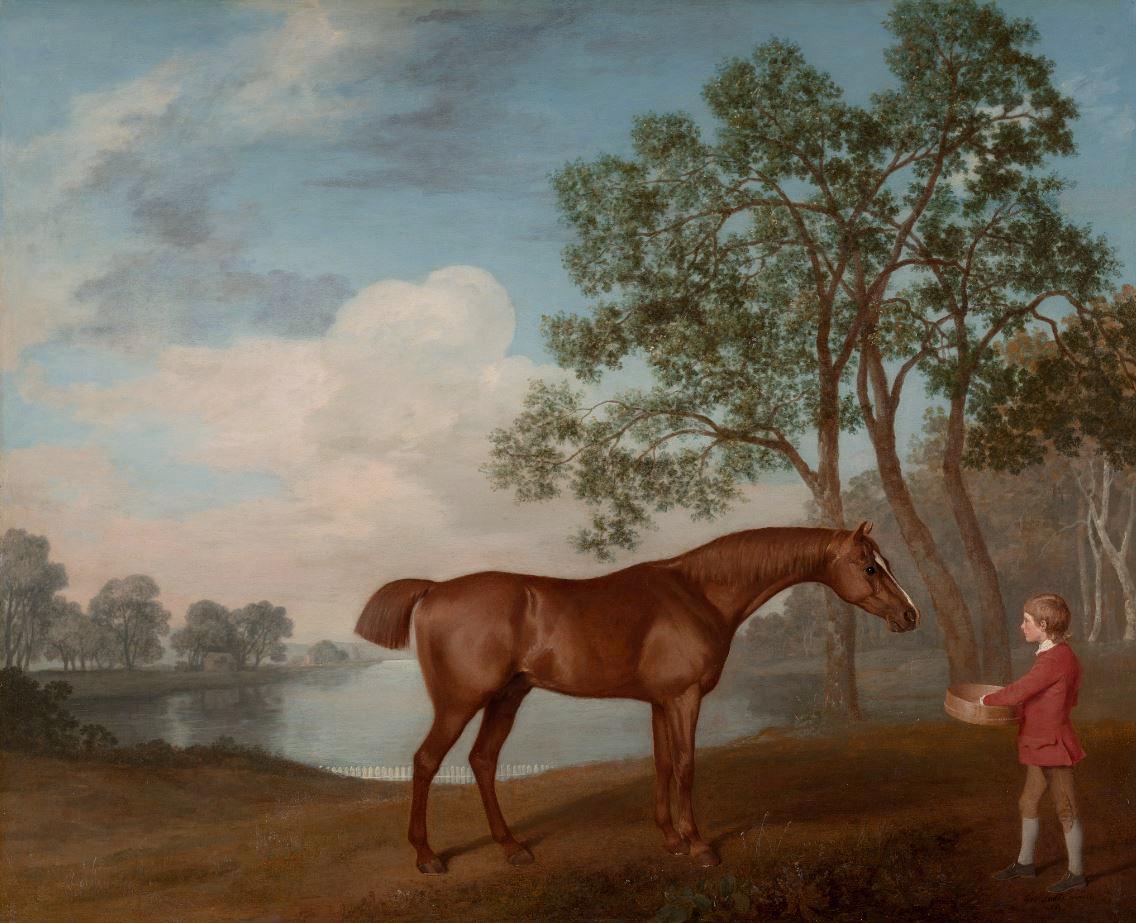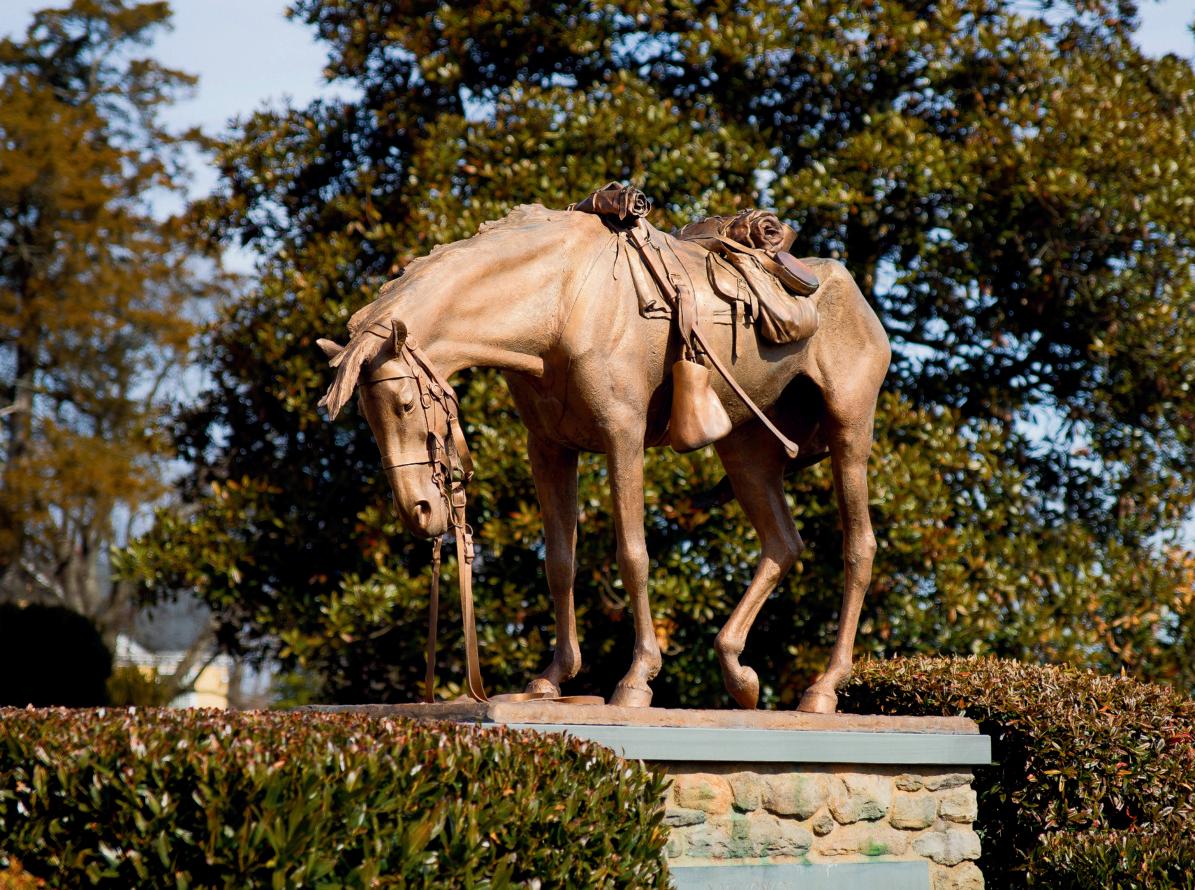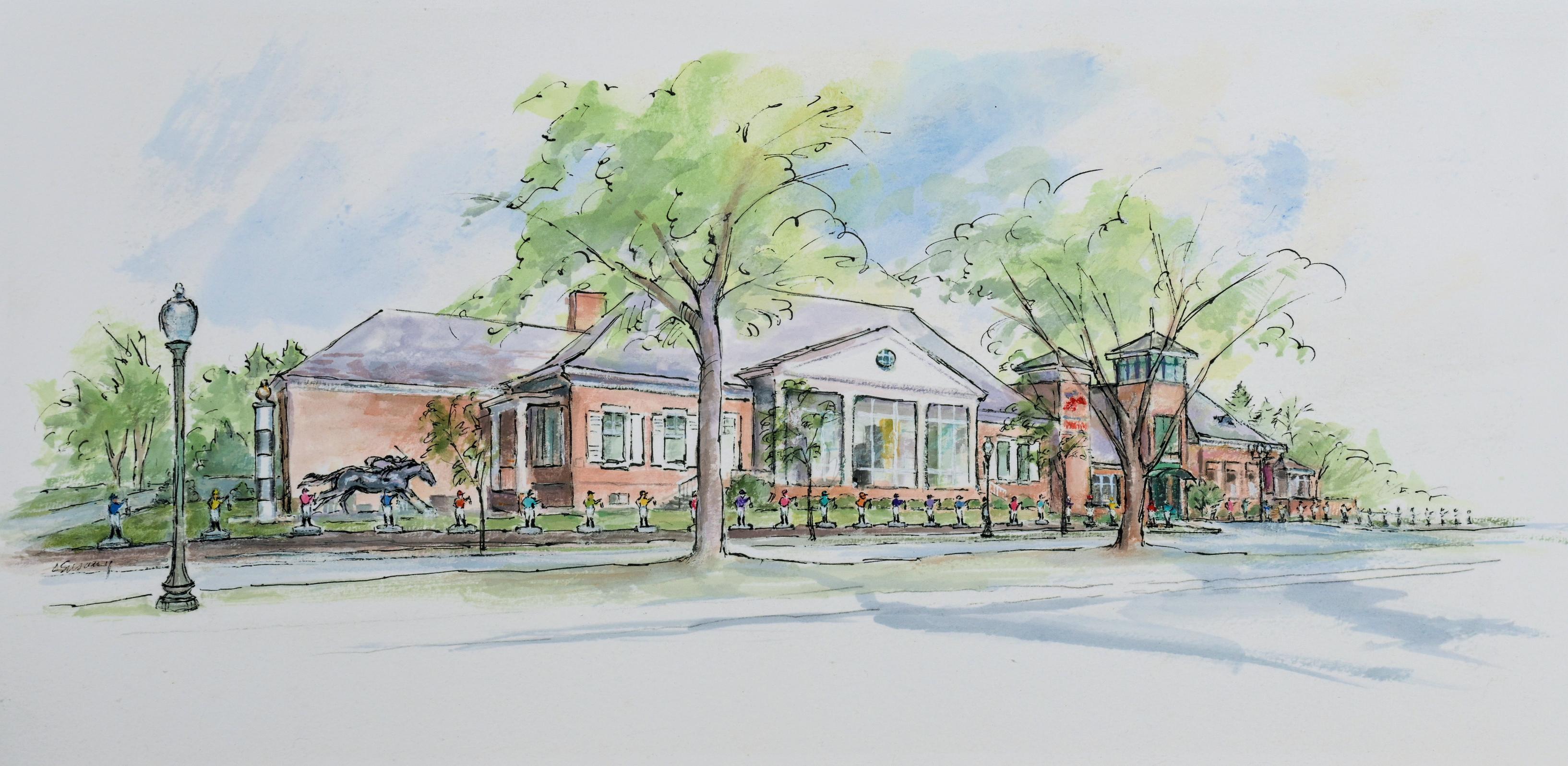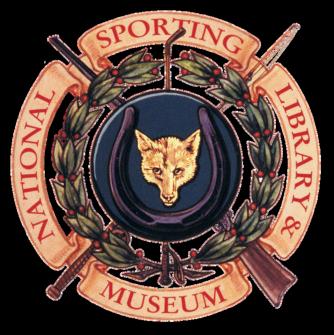The Passions of Paul Mellon: Horses, Art, and Philanthropy




The Passions of Paul Mellon: Horses, Art, and Philanthropy



It was in nineteen sixty-one when I went to work for Paul Mellon at his residence in Virginia. He had started collecting British Art and I was to be his first art curator. I spent two years, in some respects the happiest of my life, working there and travelling to his others houses in Washington, New York, Antigua and Cape Cod.
Over time, our relationship developed from kindly employer to father figure and then, to life-long friend. He was twenty-three years older than me and, in a letter on my departure from working for him he wrote, ‘I honestly look on you as a third son, (he had a son, Tim, by his first marriage and a stepson, Stacey, by his second).
From my art dealing activities in London I travelled annually four times a year, for many years, until shortly before Paul Mellon’s death in 1999, to visit him and his delightful wife, Bunny. The first visit was to Antigua, in January, then to Virginia in the Spring and late Autumn and to the Cape in August. While at the Cape we often flew to Saratoga Springs for the races and to visit the Racing Museum.
I once asked Paul Mellon which was the most important to him: the art collection or the horses. He answered at once, ‘the horses, of course’. I suspected at the time that, if his American or English trainer had asked him the same question he would have replied, ‘the art collection, of course’. But then perhaps he wouldn’t!

George Stubbs (British, 1724–1806), Pumpkin with a Stable-lad, 1774, beeswax and oil on panel. Yale Center for British Art, Paul Mellon Collection.
Paul Mellon’s acquisition in 1936 of Pumpkin with a Stable Lad by George Stubbs (1724–1806) was the foundation for the largest collection of British art outside the United Kingdom. With its simple elegance and quiet restraint, the painting epitomized Mellon’s appreciation of art and celebrated his love of horse racing. Acquired around the time Mellon began breeding horses, the painting depicts the champion thoroughbred Pumpkin, who was foaled in 1769 by Match’em (sire) out of Squirt Mare (dam) and won sixteen of his twenty-four races at Newmarket. Commissioned by Pumpkin’s owner, Thomas Foley, 2nd Baron Foley (1742–1793), the painting remained in his family until the early twentieth century, when it came to New York and was purchased by Mellon and his first wife, Mary Conover Mellon (1904-1946).
After Mellon returned home from serving in the Second World War, he approached training and breeding with greater seriousness, commissioning portraits of his most successful racehorses. In 1959 he met the art historian Basil Taylor (1922–1975), who nurtured Mellon’s enthusiasm for Stubbs and helped shape his collection of British art. Mellon’s passions for racing and art endured throughout his life; in a remarkable coincidence, his racehorse Fine Art won at Newmarket on the same day in 1964 that an exhibition of Mellon’s British art opened at the Royal Academy. Two years later, Mellon announced that he would donate his collection of 4,000 rare books, 3,000 drawings, and 1,000 paintings to Yale, establishing the Yale Center for British Art.
Jessica Quagliaroli
Chief Archivist
Edward Town
Assistant Curator of Paintings and
Yale Center for British Art
Sculpture

Paul Cézanne (French, 1839–1906), Boy in a Red Waistcoat, 1888-1890, oil on canvas. Collection of Mr. and Mrs. Paul Mellon, in Honor of the 50th Anniversary of the National Gallery of Art.
For many museum professionals in the United States, Paul Mellon was the established ideal of a museum trustee/patron. Paul’s success as an art collector was determined by a perfect storm of originating factors: great wealth; intelligence (he was born bright and received the best education); and the sensitivity and openness caused by an emotionally painful childhood and many years of Jungian analysis. By the time he died in 1999, his donations to the National Gallery had transformed it into one of the world’s great repositories of Impressionism and PostImpressionism. His most spectacular acquisition, and arguably his greatest single art gift to the Gallery, was Cézanne’s Boy in a Red Waistcoat. Mellon had sent his agent to London for the sale of the cream of Jakob Goldschmidt’s great Impressionist collection. By 1958, auctions had become glamorous evening events, with the houses inviting well-heeled guests, Hollywood celebrities and British royalty for maximum press appeal. At £220,000, the Cézanne went for a world record price for a painting bought at auction. When asked by a reporter why he had spent so much money on a painting, he replied, “You stand in front of a picture like that, and what is money?” Mellon lived with the picture for 35 years, releasing it to the Gallery only in 1994. The painting anchors the museum’s exquisite Cézanne gallery, hanging in the center of the long wall on the entry sight-line. This slightly cocky adolescent boy, half-swagger half-childish insecurity, offers all of the aspects of the artist’s formal genius to be found in the landscapes and still lifes that fill out our Cézanne room.
Dr. Mary Morton
Curator and Head, Department of French Paintings
National Gallery of Art

Alfred Dedreux (French, 1810–1860), Littzy, The Emperor’s Horse, 1853, oil on canvas. Virginia Museum of Fine Arts, Richmond. Collection of Mr. and Mrs. Paul Mellon, 85.675.
One work from the Mellon Collection at the VMFA that particularly fascinates me is Littzy, The Emperor’s Horse, by French Sporting artist Alfred Dedreux. This painting dates from 1853 and was commissioned by the French Imperial Household to accompany the purchase of an official equestrian portrait of Emperor Napoleon III by that same artist (now kept at the Palace of Compiègne, France’s Museum dedicated to the Second Empire).
A delightful painter, Alfred Dedreux trained with the Romantic generation, notably Théodore Géricault. A horse enthusiast himself, he became inspired by the tradition of 18th century British Sporting painting and attempted to introduce the iconographic codes of artists like Stubbs and Marshall in mid-19th century France.
In this portrait, beautiful thoroughbred Littzy is shown held by a bridle by a groom of the Imperial Household dressed in full State attire, perhaps Alexander Gamble, the Emperor’s Premier Piqueur. The composition, through the representation of an animal and its appointed servant, evokes all the bygone pomp and splendor of Imperial court life in France.
The collections bequeathed by Paul Mellon to VMFA place particular emphasis on the Britishness within the European tradition of Sporting Art. Nonetheless a very fascinating part of his collecting are the works he acquired by leading French artists who proved passionate about equine culture: Delacroix, Géricault, Dedreux and Bonnard in particular. I like to think that these acquisitions illustrate an aspect of the complicity of spirit between Paul and Bunny Mellon, bringing together his love of horse culture, and her affirmed Francophilia.
Dr. Sylvain Cordier
Paul Mellon Curator and Head of the Department of European Art Virginia Museum of Fine Arts

Base inscribed “In memory of the one and one-half million horses and mules of the Confederate and Union Armies who were killed, were wounded, or died from disease in the Civil War. Many perished within twenty miles of Middleburg in the battles of Aldie, Middleburg and Upperville in June of 1863.”
Among the most iconic sculptures in the National Sporting Library & Museum’s (NLSM) collections is the Civil War Horse by Tessa Pullan which meets visitors at the front circle of the NSLM’s campus. The generous gift from Paul Mellon was inspired by a book he read, The Cavalry Battles of Aldie, Middleburg, and Upperville, June 10–27, 1863, by Robert F. O’Neill, Jr. The monument was designed—not to represent the Union or Confederate sides—but rather to commemorate equine casualties.
Mellon, a graduate of Yale University and Clare College, utilized the National Sporting Library (NSL) to conduct scholarly research on period tack and equipment. He was particularly struck by the horse in an illustration by Frederic Remington (American, 1861–1909), reproduced in Harper’s Weekly in 1892. Titled The American Tommy Atkins in a Montana Blizzard (c. 1892), it depicts a mounted soldier in the snow. Mellon also hired a Civil War reenactor with an outfitted horse and photographed hundreds of angles to send to Pullan, along with all his research and the Remington image. Pullan and Mellon worked closely together to fine-tune the small-scale model before the artist embarked on the three-quarter-size sculpture.
The NSLM is honored to have the first casting of the Civil War Horse monument. It reflects Mellon’s dedication to history, literature, and publicly accessible art as well as the legacy he built as an equestrian and a philanthropist. He was an active member of the NSL and donated $1 million towards the Library building opened in 1999 and the boxwood garden, which today, features another sculpture he commissioned from Pullan of his 1993 Kentucky Derby and Travers Stakes winner, Sea Hero. Additionally, he bequeathed several other artworks and his weathervane collection to the institution.
Claudia Pfeiffer
George L. Ohrstrom, Jr. Deputy Director & Head Curator
National Sporting Library & Museum

In 1985 Paul Mellon gave this painting as an anniversary present to his beloved wife, Rachel ‘Bunny’ Mellon. They married on May 1, 1948 and began a life of collecting beautiful art and books which overtime filled their homes in New York City, Washington, D.C., Antigua and Upperville, Virginia. Several of these remarkable treasures were bequeathed to the National Gallery of Art, Virginia Museum of Fine Art, the Yale Center for British Art, and the National Museum of Racing and Hall of Fame.
Mrs. Mellon brought Calling Out the Beagles to her library and proudly hung it in a space where it can be appreciated by everyone. The work depicts a very distinguished huntsman who is preparing to cast several anxious beagles for a hunt. This painting gave them both much enjoyment. Mr. Mellon, and Mrs. Mellon in her early years, were ardent hunters who hosted local hunt clubs which met on their Virginia estate, Rokeby Farms for annual hunts. Mrs. Mellon was trained to ride sidesaddle by her mentor Charlotte Haxall Nolan (1883-1969), the founder of Foxcroft School in Middleburg, Virginia. Mr. and Mrs. Mellon also had pet beagles in Virginia
Throughout their long marriage, Mr. Mellon supported his wife’s collecting and horticultural pursuits. He also encouraged her to build the Oak Spring Garden Library which houses a vast and eclectic collection of books and art that mostly relate to gardens and plants. The first section was completed around 1981 and an annex was built in the 1990s. Mrs. Mellon formed the Oak Spring Garden Foundation in 1993 with the help of Paul Mellon and today our collections are used by scholars and students from all over the world who have an interest in art, horticulture, botany and natural history.
In January of 1994 Paul Mellon gifted Mrs. Mellon a copy of his autobiography, Reflections in a Silver Spoon and he inscribed it with the following sentiment: “To The Oak Spring Garden Library – in praise of its scholarly spirit, in awe of its artistic and botanical treasures and in recognition of the creative genius of Rachel Mellon, its Founder I offer this Resumé of a long and lucky and happy life.” Paul Mellon, Oak Spring 4 Jan. 94.”
The Oak Spring Garden Foundation is very grateful to Mr. Mellon for his many philanthropic endeavors, especially his passion for preserving the land in this area. The Foundation’s bucolic views, approximately 700 acres, are now in easements and his famous Broodmare Barn which housed some of his most important horses, was converted into bedrooms for visiting guests who take part in the Foundation’s various workshops and conferences.
Today, the Mellon’s devotion for history and culture is firmly rooted in the Oak Spring Garden Foundation’s mission and it will continue to benefit and enrich the lives of others.
Tony Willis Head Librarian
Oak Spring Garden Foundation

Museum.
Alfred Dedreux (French, 1810–1860), The Trainer, oil on canvas. Bequest of Paul Mellon. British Sporting Art Trust, Newmarket.
This painting was given to the British Sporting Art Trust as part of the Paul Mellon Bequest in 1999 and is the only work by Dedreux in the collection. It is particularly precious as one of only six examples of the artist’s work in public collections in the UK. All are rarely on public display but we are proud to do so in tribute to Mellon, whose passion and foresight as a collector led him to buy the best available examples of sporting art. The Trainer joins works by Stubbs, Agasse, Marshall, Ferneley and Herring in Palace House, the remains of Charles II’s 17thcentury sporting palace in Newmarket and now part of the National Horse Racing Museum.
Dedreux has been virtually ignored by art history but the artist was a favourite of Paul Mellon’s and many more examples can be found in his bequest to the Virginia Museum of Fine Arts. His canvases capture scenes of sporting life with keen observation as in this example which depicts an incidental moment with great charm, as the trainer mounted on his dozing hack checks his notes while his string walks behind him.
Though of French birth, Dedreux made numerous visits to England, the first at the invitation of King Louis-Philippe on his official visit in 1844. Following the revolution of 1848, the French royal family immigrated to England. Dedreux was a frequent visitor, where he found an enthusiastic following among the hunting and racing communities.
Katherine Field
Packard Curator for the British Sporting Art Trust
National Horse Racing Museum

John Skeaping (British, 1901–1980), Secretariat, 1974, bronze.
Paul Mellon observed that sculptor John Skeaping “seizes each scene in one eternal instant.” In this sculpture, Secretariat runs with determination, muscles engaged with forelegs leaping forward suspended in mid-air, ears pinned, and mane and tail flowing behind. A central piece at the National Museum of Racing and Hall of Fame, this three-quarter life size bronze of Secretariat is located within the Cornelius Vanderbilt Whitney Courtyard. Mellon thought that “Secretariat really is a super-horse, epitomizing the best in American racing and breeding, and therefore should be immortalized by a great artist.” He commissioned Skeaping for the task. The artist studied Secretariat at Saratoga and Claiborne and made note of his “graceful balance.” Mellon believed that the sculpture should be exhibited at Belmont Park, the location of Secretariat’s finest victory. The sculpture was unveiled in the paddock at Belmont on May 29, 1976. Mellon presented it “to the National Museum of Racing, not only to honor the memory of that magnificent horse but also to acknowledge again the achievements and sportsmanship of his owners— Penny Tweedy and the Meadow Stable— as well as his trainer Lucien Laurin, and his jockey, Ron Turcotte. Secretariat belongs to history, to the romance of the turf— and he belongs to the people.” The original casting was later moved to its current location at the Museum in 1988 at the completion of a renovation. Before it was moved, Mellon commissioned a second casting to be gifted to the Museum and placed at Belmont Park. Paul Mellon had an enormous impact on the National Museum of Racing and Hall of Fame as an active board member and donor. He was inducted into Hall of Fame as a Pillar of the Turf in 2013.
Jessica Cloer Curator
National Museum of Racing and Hall of Fame



